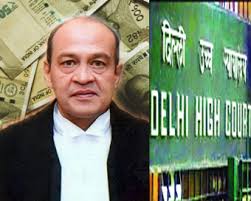New Delhi: Chief Justice of India Sanjeev Khanna has constituted a three-member committee to investigate the recovery of “four to five half-burnt sacks” full of notes after the fire incident at the residence of a Delhi High Court judge. (judge’s ) With this, the internal investigation process has reached the second important stage, the findings of which will decide the fate of the concerned judge. After the fire incident in the ‘store room’ of the official residence of a Delhi High Court judge in the posh Lutyens Delhi area on March 14, firefighters and police personnel allegedly found cash. Delhi High Court Chief Justice Devendra Kumar Upadhyay, in his report on March 21, which was made public on Saturday evening, had called for a “thorough investigation” of the allegations, after which the Chief Justice constituted a three-member committee.
No time limit to complete the investigation
The three-member inquiry committee constituted by the Chief Justice comprises Justice Sheel Nagu (Chief Justice of Punjab and Haryana High Court), Justice GS Sandhawalia (Chief Justice of Himachal Pradesh High Court) and Justice Anu Sivaraman of Karnataka High Court. However, no time limit has been set for the inquiry committee to complete the investigation. In 2014, while hearing a case related to sexual harassment allegations leveled by a subordinate court judge of Madhya Pradesh against a high court judge, the Supreme Court had laid down the internal procedure for investigating allegations against a judge of constitutional courts.
What is the internal investigation process?
The court said that in the first stage of the internal investigation process, the prima facie veracity of the allegations contained in the complaint is ascertained. The apex court had said, “If found so, is there a need for in-depth investigation. In the first stage, there is no need to investigate the allegations in depth. It only requires an assessment on the basis of the subject matter of the complaint and the response of the judge concerned. “All that the Chief Justice of the High Court has to do is to decide whether an in-depth investigation is required. This is to be done on the basis of a logical assessment made by considering the response of the judge concerned (in the context of the allegations made in the complaint),” the procedure said.
The apex court had said that this is the “second stage of the internal investigation process” in a case of serious consequence involving sitting judges of high courts. The court had said that the second stage is monitored by none other than the Chief Justice. If the Chief Justice agrees with the view expressed by the Chief Justice of the High Court that an in-depth investigation is required, he will constitute a “three-member committee”, thus taking the investigation process to the second stage. The Supreme Court had said that this committee will consist of the Chief Justices of two high courts (other than the high court concerned) besides a judge of the high court. It said that the second stage requires an in-depth investigation.
The apex court had said that though the three-member committee is free to decide its own inquiry procedure, the underlying requirement is that the procedure evolved should be in conformity with the rules of natural justice. “Here, the authenticity of the allegations will be examined on the basis of first instance inquiry,” the court said. “The judges of the three-member committee will have no association with the judge concerned. Not only will the judge concerned get a fair opportunity to refute the allegations levelled against him, but the complainant will also be satisfied that the inquiry will not be unfair. The internal inquiry procedure has been designed to keep out bias or prejudice,” the apex court had said.
The opinion of the three-member committee will be important
The apex court had also mentioned various steps to be followed during the internal inquiry process to probe the allegations against a sitting judge of the High Court. It said that at the conclusion of the inquiry conducted by the committee, it will record its findings and a report will be submitted to the Chief Justice. The apex court had said that the report of the committee may arrive at one of the following conclusions – that there is no substance in the allegations levelled against the judge concerned; or that there is sufficient substance in the allegations made against the judge. The Supreme Court had said, “In such a situation, the three-member committee shall further have to give its opinion as to whether the allegation of misconduct against the judge concerned is so serious as to require initiation of proceedings for the removal of the judge concerned; or whether the allegations contained in the complaint are not so serious as to require initiation of proceedings for the removal of the judge concerned.” The apex court had said that if the committee comes to the conclusion that the misconduct is not so serious as to require initiation of proceedings for the removal of the judge concerned, the Chief Justice shall advise the judge and may also direct that the report of the committee be placed on record. The apex court had said, “If the three-member committee comes to the conclusion that there is substance in the allegations, to initiate proceedings, the Chief Justice shall proceed as follows for the removal of the judge concerned: – (a) the judge concerned shall be advised by the Chief Justice to resign or take voluntary retirement
 Indian Thought Latest News & Views
Indian Thought Latest News & Views



